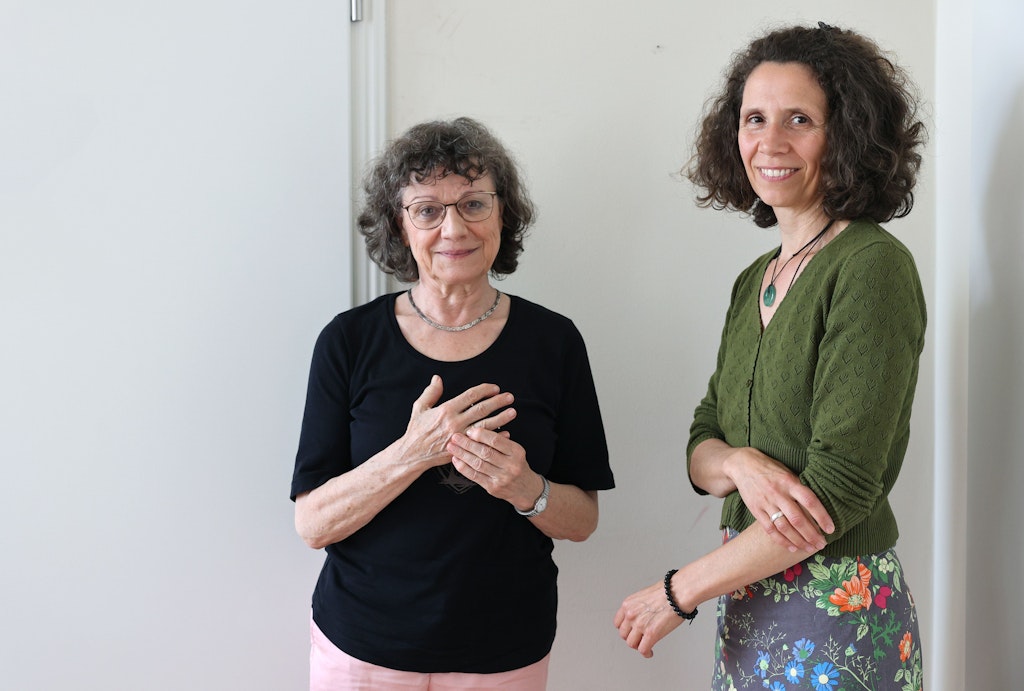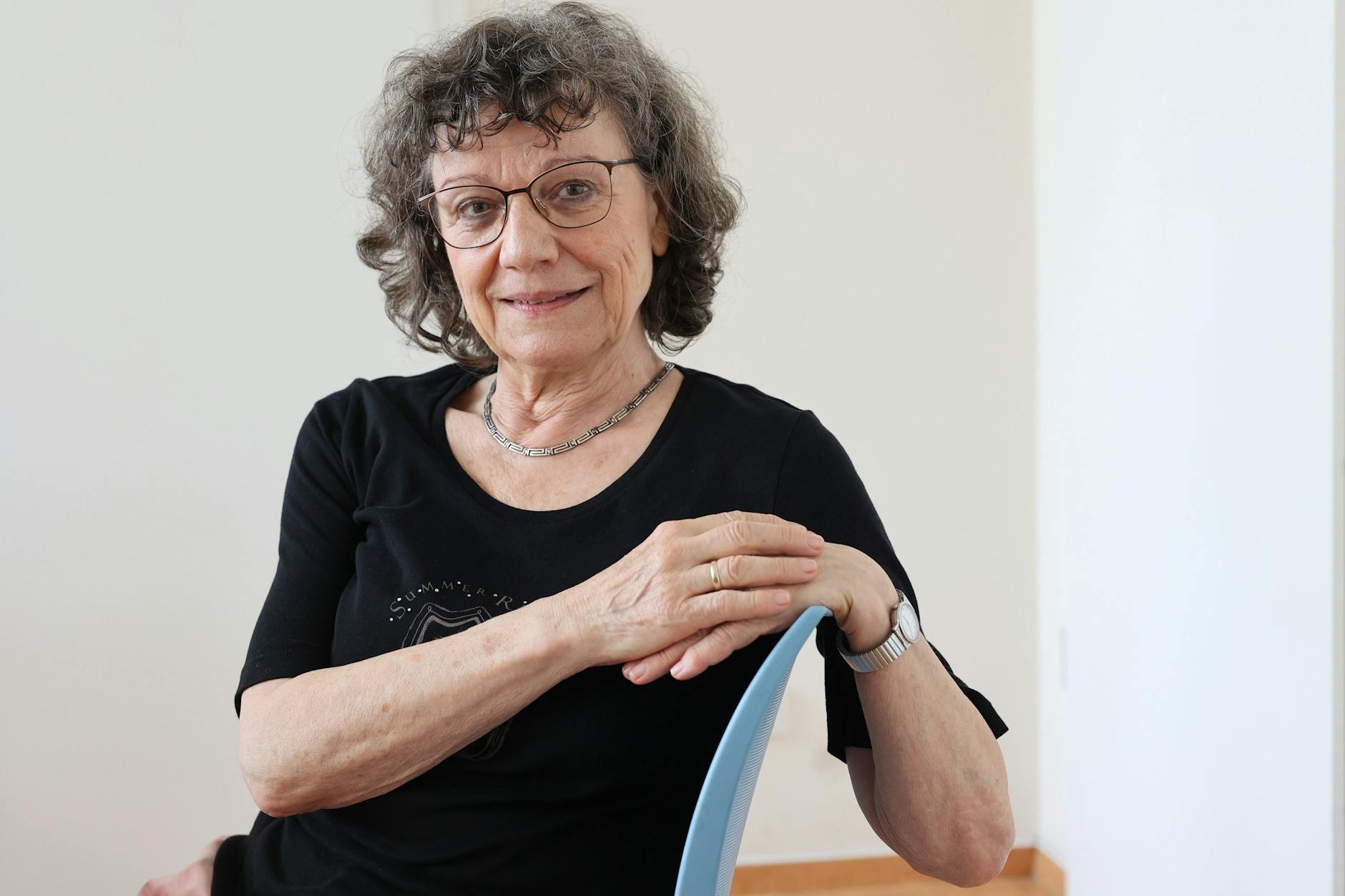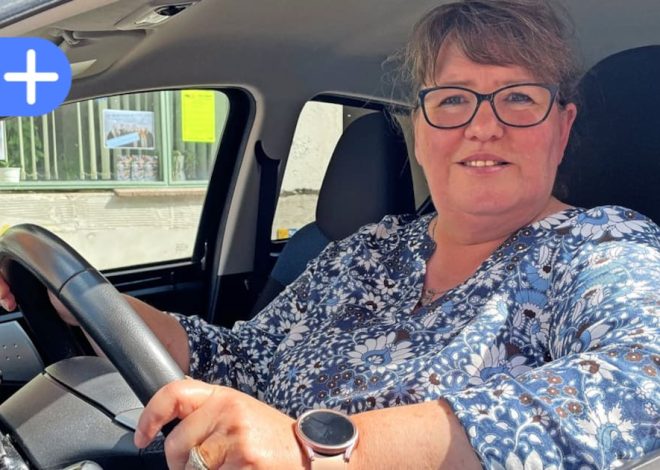
Who cares for Berlin’s caregivers?
It is a farewell. Not from one moment to the next, but year after year, a little more by little. A farewell to a familiar person, the husband, in his eighties, whose personality is slowly changing. Who suffers from dementia, Alzheimer’s type. Since 2022, Monika Pyko has had certainty after a neurologist’s diagnosis. But she was lucky because she took part in a walk. A city walk organized by the Care Engagement Contact Point in Pankow, which now relieves her of the pressure. Which helps her find answers to the question: “I care – and where do I fit in?”
That is also the name of a series of workshops. It is aimed at people from the district who care for relatives in need of care: their mother, father-in-law or their own husband. “I have learned to take a break sometimes,” says Monika Pyko. She has now joined a self-help group. There are currently eight in Pankow, as well as 13 leisure groups. A choir is part of it. 37 volunteers make the program possible, as well as the city walks that are intended to build bridges. Monika Pyko went through it – that was her luck.
Good morning Berlin
Newsletter
Thank you for signing up.
You will receive a confirmation by email.
Caregivers: 43 percent suffer from depression, anxiety, eating or obsessive-compulsive disorders
Because care can make the carers themselves ill through constant stress. They have often had relatives with circulatory problems in the contact point. There were also other complaints caused by the mental imbalance, even heart attacks or strokes. Just this year, the opinion research institute Ipsos published a study for Germany. According to it, 43 percent of caring relatives reported that they suffered from depression, anxiety, eating or obsessive-compulsive disorders, or from psychological problems in general. This figure is significantly higher than the national average of 31 percent.
Thousands are affected if you extrapolate the result to the total number. In Berlin alone, around 200,000 people care for a total of 157,000 relatives. This is how the Senate administration sums up the situation: Of the more than 185,000 people in need of care, only a small proportion live in a home, namely just 15 percent. The professional staff in inpatient and outpatient care are the focus of public attention, if at all. But families and friends bear the brunt of this increasingly important area of public welfare.
It is family members like Monika Pyko without whom the system would no longer function. It took her a while to get used to her new role. But this process soon led her to the realization that she had to make room for breaks. “A no is a yes to yourself” – this is now an important part of her strategy. She first heard about it in her workshop. One takes place once a year in Pankow, spread over two months in eight so-called modules.
One deals with stress and how to deal with it, another with care centers and their function. Monika Pyko then turned to the center responsible for her in Weissensee. “Up until then, I had been hesitant to go there.” The fact that her husband was given a care level as a result was a decisive step for her, also in view of the subsidies she now receives.
Saying goodbye is another issue that caring relatives have to deal with, which can hit them suddenly. Or, as in Monika Pyko’s case, a little more bit by bit. In such cases, feelings of guilt easily arise: the promise not to put mother or father, wife or husband into a home has to be broken because there is no other option. Emergencies, another module: what happens if caring relatives are unavailable due to illness? And finally, an important lesson, for some the most important of all: relationships in transition.
“For example, the relationship between mother and daughter,” says Julia Giese from the contact point in Pankow: “A lot can change there.” She keeps hearing stories of old role models breaking down. “Then it’s time to get down to business.” The project manager is one of two permanent employees at the contact point. A colleague also coordinates visits by volunteers to sick people in their homes. This is also part of the service.
Daughter cares for mother: When old role models break down
Julia Giese is sitting in her office in the district’s center, not far from the town hall. When she looks out of her window, she can see the traffic dragging across a courtyard along Schönholzer Strasse on this early afternoon. There are two desks in the small room. On one wall hang coat hangers with life-sized, painted paper dolls on them. Workshop participants made them. They are a kind of avatar; they are used when needed.
In the relationship module, for example, when a woman talks about arguments with her mother. When the old lady is perhaps notoriously uncooperative, insists on her own will, rejects suggestions on principle. When the daughter finds it difficult to talk about this seemingly hopeless situation. Julia Giese says: “It can also be done through dolls.” There are unspoken things between the two that have not been resolved since childhood. “It is often daughters who want to win the love of their parents. A love that they did not receive in childhood.” In such problem situations, Julia Giese arranges contact with a psychotherapist. “We cannot deal with something like that.”
It is mostly women who look after relatives. They make up 70 percent of the 4.8 million nationwide and spend an average of 21 hours a week on unpaid care work. Domestic care is female – with sometimes profound consequences. Julia Giese thinks of a term for this: the “sandwich generation”. It stands for women who have children of their own when their parents become in need of care. “They also have regular jobs.” 65 percent do this, forced to work part-time. This means that they are particularly at risk of poverty in old age.
The high level of stress – physical, mental and time-related – also often leads to loneliness. Evidence of an increased risk is provided by a nationwide study, the results of which are recorded in the Barmer Care Report 2018: According to a survey, almost 23 percent of the more than 1,800 relatives interviewed said that care had a negative impact on friendships. Around eleven percent reported never having enough time for contact with family, friends or neighbors. And around twelve percent felt mostly or even permanently alone and helpless.

Monika Pyko creates personal freedom for herself as a caregiver.Sabine Gudath
Monika Pyko has just arrived from Weissensee, she was just caught out by a rain shower – she takes it with humor. The pensioner has arranged to meet Julia Giese in a conference room at the contact point. Small-format oil paintings hang on the wall. Landscapes, faces, the man with the gold helmet, a copy with a self-portrait of the painter, one of the caring relatives here in Pankow. The two women are on first-name terms. Their conversation quickly turns to loneliness and what helps against it. They talk about the self-help group, the program, Werner, the former music teacher who has now set up a choir. They have already had one performance, and Monika Pyko was there.
And then there is Jürgen, the craftsman who has been supporting them for some time, a volunteer. Jürgen is there when relatives need repairs. Without volunteers, the Pankow residents would not be able to maintain their services. As in many areas of social work, money is tight. “The support network is becoming increasingly fragile,” says Julia Giese. The sponsor of their facility is the Humanist Association. Those responsible there cannot yet foresee how the Senate’s current austerity measures will affect the work. Many smaller projects in the city have already given up.
In any case, the Senate only grants financial commitments for a period of one year. This morning, Giese received the news that the money will continue to flow until October. This means they are able to continue operations. However, the amount is not enough to set up a branch in Prenzlauer Berg or other parts of Pankow to get closer to the demand. There is a lot of demand in Berlin’s most populous district with its 410,000 people. The average age is 42.7 years. It is foreseeable that the number of people in need of care will rise in the coming years – and then it will be even more important for relatives.
Monika Pyko has found a solution for herself, an answer to the question of where she is in all this. “I take time for myself,” she says. “My husband can still be alone.” And if he can’t do that anymore? “Then he has to go to day care once or twice a week.” The contact point will help her find a free place. Now Monika Pyko has to go home again. Outside, the rain has stopped, the sun is breaking through the gray. The two women have got up and are exchanging last-minute information: the next meeting, the next choir rehearsal. Behind them, a red sign is stuck to a door. It says in white letters: “Emergency exit.” And: “Please do not block this door.”

Ethel Purdy – Medical Blogger & Pharmacist
Bridging the world of wellness and science, Ethel Purdy is a professional voice in healthcare with a passion for sharing knowledge. At 36, she stands at the confluence of medical expertise and the written word, holding a pharmacy degree acquired under the rigorous education systems of Germany and Estonia.
Her pursuit of medicine was fueled by a desire to understand the intricacies of human health and to contribute to the community’s understanding of it. Transitioning seamlessly into the realm of blogging, Ethel has found a platform to demystify complex medical concepts for the everyday reader.
Ethel’s commitment to the world of medicine extends beyond her professional life into a personal commitment to health and wellness. Her hobbies reflect this dedication, often involving research on the latest medical advances, participating in wellness communities, and exploring the vast and varied dimensions of health.
Join Ethel as she distills her pharmaceutical knowledge into accessible wisdom, fostering an environment where science meets lifestyle and everyone is invited to learn. Whether you’re looking for insights into the latest health trends or trustworthy medical advice, Ethel’s blog is your gateway to the nexus of healthcare and daily living.



